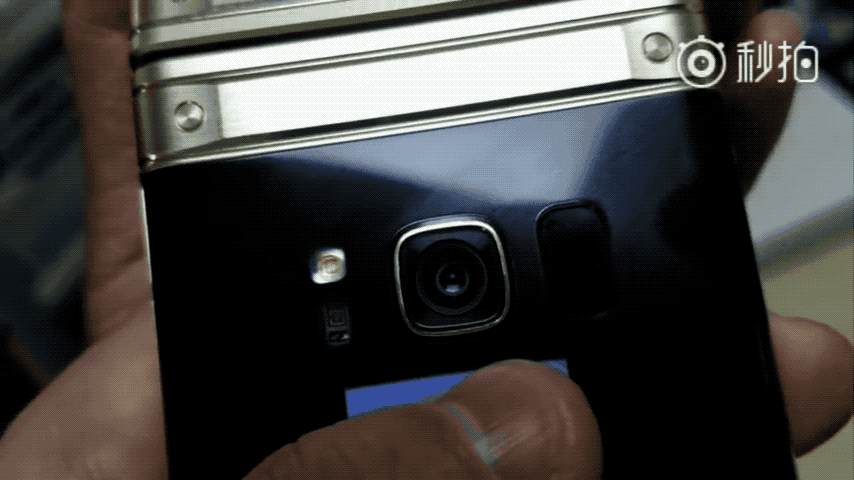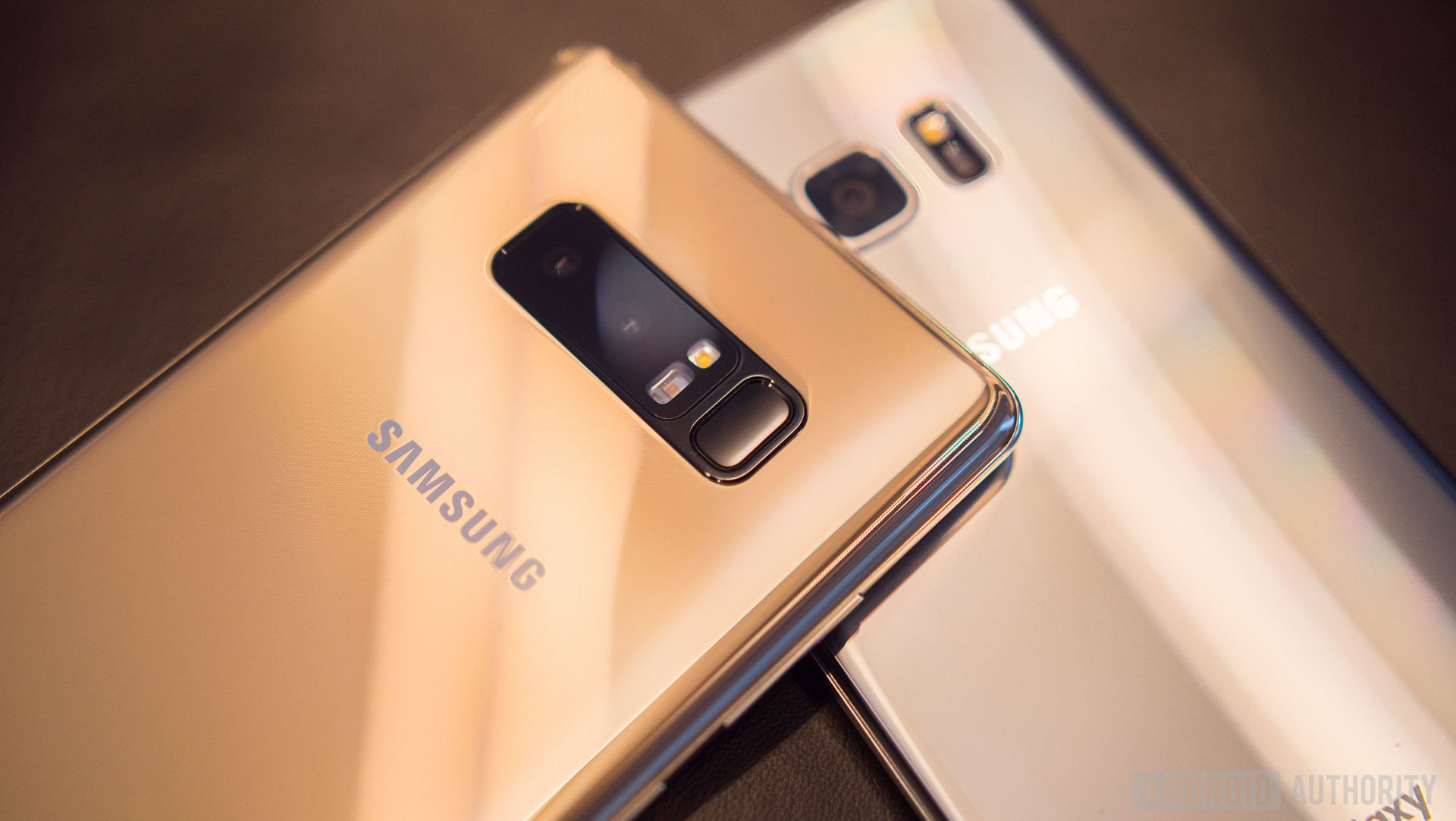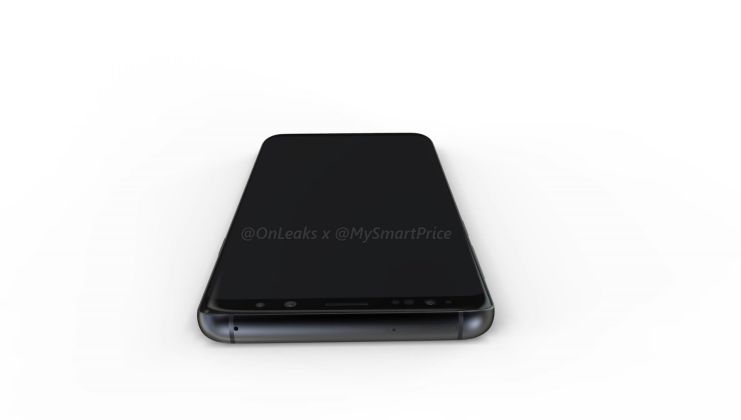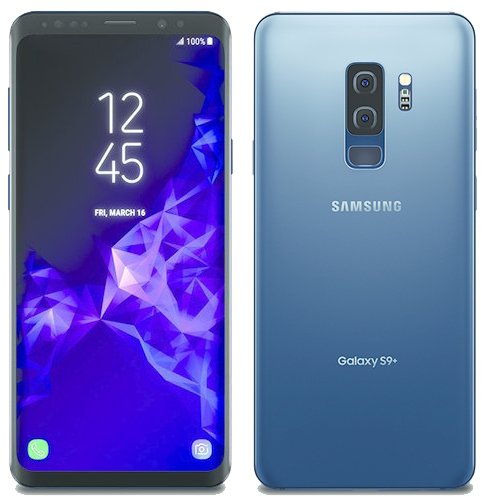In this post, which will be updated regularly, we take a closer look at the latest rumors surrounding the upcoming Samsung Galaxy S9 and S9 Plus smartphones.

The Samsung Galaxy S8 and S8 Plus are among the best smartphones you can get. They offer gorgeous bezel-less designs, sexy curved displays, and top-of-the-line specs. But they do have faults, we hope Samsung will address them with their successors. These include the weirdly-positioned fingerprint scanner, the lack of dual-cameras, an easily-fooled facial recognition system, and more. Fixes for all of these, and new features, could be part of the Samsung Galaxy S9 and S9 Plus.

Samsung hasn’t shared any details about the Galaxy S9 and S9 Plus with the public yet. But we have come across a lot of reports and leaks that give us a good idea of what to expect in terms of the Samsung Galaxy S9 and Galaxy S9 Plus’ specs, features, design, price, and more. If you’re interested in learning more about the two new powerhouses from Samsung, keep reading. You’ll find all the latest Samsung Galaxy S9 rumors below.
Samsung Galaxy S9 release date

The Samsung Galaxy S9 and S9 Plus will be announced a month sooner than their predecessors. The smartphones will make their debut on February 25 in Barcelona, a day before MWC kicks off.
As for the Samsung Galaxy S9 release date, several sources claim the device will be officially released on Friday, March 16. Industry leaker Evan Blass claimed in the tweet attached below that the Galaxy S9 and S9 Plus would be available for pre-order on March 1, before being officially released on March 16.
According to a C-level executive at a major casemaker, the go-to-market schedule for Galaxy S9 / S9+ is as follows:
Launch – 2/26
Pre-orders – 3/1
Ships/releases – 3/16— Evan Blass (@evleaks) January 16, 2018
SamMobile says its sources have also indicated a March 16 release date, though only for the U.S. and/or South Korea, with other markets to follow shortly afterwards.
Korean-based news site The Investor has also pointed to the same release date, while a report from WinFuture tells us a different story. The site claims pre-orders for the devices will go live on the day of their announcement (February 25), with shipping starting from March 8.
Samsung Galaxy S9 specs and features
The Samsung Galaxy S9 and Galaxy S9 Plus won’t be major upgrades over their predecessors.
According to a report from VentureBeat, they will come with the same curved displays as the Galaxy S8 series. This means we’ll see 5.8- and 6.2-inch Super AMOLED panels with QHD+ resolution and an 18.5:9 aspect ratio.
ETNews reports that both the Galaxy S9 and the Galaxy S9 Plus will use Y-OCTA display technology, which integrates the touch layer in the encapsulation layer of the OLED display, rather than using a distinct film-type layer like on older generations of Samsung’s displays. Y-OCTA was only used on the Galaxy S8, but with the new generation, both the S9 and the S9 Plus will take advantage of it. Y-OCTA displays are thinner, have better optical properties and are reportedly 30 percent cheaper to manufacture.
The Galaxy S8 and S8 Plus are identical except for screen and battery sizes, but their successors change things up. The Galaxy S9 Plus is said to have 2 GB of RAM more than its smaller brother (6 GB vs 4 GB). It might also feature a dual-camera setup, while the S9 should only have a single shooter on the back.
An image of an alleged Galaxy S9 retail box, which you can check out above, gives us additional info regarding the specs of the Galaxy S9. It suggests that the flagship’s camera could have a 12 MP sensor with OIS and variable aperture — f/1.5 for low-light shots and f/2.4 for when there’s more light available. We’ve already seen this technology on Samsung’s high-end flip phone called the W2018, which launched back in December. You can check out what the variable aperture looks like in action below.

The retail box also mentions “Super Slow-mo,” hinting that the Galaxy S9 could capture videos at 1,000 fps — just like the Sony Xperia XZ Premium. The camera could also perform well in low-light conditions and include support for creating 3D emojis. Samsung is already teasing all three features with short videos, which you can check out here.
Some of these camera rumors are backed up by a recent report from ETNews. The publication reaffirmed that the S9 will have a 12 MP rear camera with f/1.5 variable aperture lens (up to f/2.4) — the smallest ever for Samsung (the S8 and Note 8 cameras came with an f/1.7 aperture).
The S9’s (and likely S9 Plus’) front camera is said to come in at 8 MP, with autofocus and the iris-scanning technology seen previously. ETNews claims the Galaxy S9’s iris scanner will be integrated in the front-facing camera, while the Galaxy S9 Plus will have a discrete iris scanner and a regular selfie camera. It’s not clear why Samsung would go down this route, but space limitations and supply constraints are two possible explanations. The iris scanner/camera combo on the Galaxy S9 is said to be manufactured by two Korean suppliers — Partron and MC Nex. Though, previous reports have claimed the Galaxy S9’s iris scanning lens will be upgraded from 2 MP to 3 MP. This could be only for the Galaxy S9 Plus, however.

Samsung recently published new details on its own website about the company’s new ISOCELL camera sensors. Some of that technology is likely to show up first in the Galaxy S9 and S9 Plus. One of the more interesting hardware improvements mentioned is called ISOCELL Fast, which is a 3-stack fast readout sensor. Samsung claims that this will allow cameras with this sensor to record video in Full HD (1080p) resolution with a whopping 480 frames per second. That means the sensor will be able to offer super-slow-mo video at a high resolution. The same sensor is also supposed to have a feature called Super PD, which Samsung hints will give smartphones faster autofocus speeds for its cameras.
Some of Samsung’s new ISOCELL technology is likely to show up first in the Galaxy S9 and S9 Plus.
The page also talks about another sensor, ISOCELL Bright, which is supposed to help improve taking photos in low-light conditions by combining four normal-sized pixels into one large pixel. There’s also a mention of ISOCELL Dual, which is supposed to improve features in smartphones with dual sensors, including better light sensitivity, depth effects, and sharper brightness. Finally, the page mentions ISOCELL Slim — a sensor that is supposed to offer high-quality images in smartphone cameras that have modules as thin as 0.9 microns.
The Galaxy S9 series might have stereo speakers on board with Dolby Surround and ship with a free pair of headphones, both of which will be tuned by AKG. They are rumored to pack the same batteries as their predecessors — 3,000 and 3,500 mAh. Then there’s also the IP68 rating for protection against water and dust, wireless charging, and an improved iris scanner.
Rumors also suggest that both devices will be powered by the same chipset — either the Exynos 9810 or the recently announced Snapdragon 845, depending on the region.
According to that same ETNews report mentioned above, Samsung is also said to be saving space inside the device thanks to a new type of printed circuit board (PCB). This “substrate Like PCB” (SLP) technology is said to be “thinner and narrower” than the previous technology and will be used in models with Samsung’s Exynos chip, which are expected to account for 60 percent of total sales. What this would mean for the Snapdragon variant released in the West wasn’t speculated upon, but it should theoretically mean that the Exynos models have more room for internal components.
We also expect to see a new location for the fingerprint scanner. The Galaxy S9 smartphones will still sport the scanner on the back, but they won’t sit right next to the camera like on their predecessors. Instead, they’ll likely be located below the cameras, in the middle of the devices. This is fantastic news, as the scanner’s location on the S8 is one of its biggest drawbacks. Not only does it look weird, it’s also impractical.
According to Business Korea, Samsung will stick with the same 2D facial recognition software found on the Galaxy S8. The company has decided to ignore 3D technology due to “technological limitations” and concerns over user security. But the facial recognition feature could get a small upgrade — it should be faster.
What’s more interesting is that the handsets could have a feature called “Intelligent Scan”, which is said to combine the iris scanner and face recognition technology to offer a more secure way for unlocking your device.

Galaxy S9 and S9 Plus will run Android 8.0 Oreo with Samsung’s Experience 9.0 UI on top. Bixby, which made its debut on the Galaxy S8 series, should also be on board, probably in an enhanced form. This means the devices will likely have a dedicated Bixby button on the left side, just like their predecessors.
The Galaxy S9 series could also come preloaded with Samsung’s rumored social media app called Uhssup. According to Korean site HeraldCorp, it will let users share their location in real time and comment on the locations of other users. The service is also expected to have messaging capabilities similar to those found on Facebook Messenger and WhatsApp.
It’s worth mentioning that the Galaxy S9 smartphones have recently stopped by the FCC — model numbers SM-G960F and SM-965F. However, apart from a long list of network bands and other types of connectivity, the listings don’t reveal much else.
Recently, Samsung’s upcoming smartphones — carrying model numbers SM-G960 (Galaxy S9) and SM-G965 (Galaxy S9 Plus) — have been certified by the FCC again. This time, a few different versions of the devices are listed that end with U, U1, W, and XU. The letter U stands for the U.S. model, U1 is for the unlocked variants, W is for Canada, and XU is for demo units.
The FCC ID reveals the full list of supported GSM, CDMA, LTE, and UMTS bands, which you can view here (Galaxy S9) and here (Galaxy S9 Plus). They show that the smartphones will support all major bands on all carriers. That means Samsung will probably release one version of each smartphone that will be sold by all carriers.
| Samsung Galaxy S9 | Samsung Galaxy S9 Plus | |
|---|---|---|
| Display | 5.8-inch 18.5:9 Super AMOLED 2960 x 1440 resolution 570 ppi | 6.2-inch 18.5:9 Super AMOLED 2960 x 1440 resolution 529 ppi |
| Processor | Qualcomm 845 or Exynos 9810 | Qualcomm 845 or Exynos 9810 |
| RAM | 4 GB | 6 GB |
| Storage | 64 GB | 128 GB |
| MicroSD | Yes, up to 256 GB | Yes, up to 256 GB |
| Camera | Primary: A single 12 MP camera with variable aperture Secondary: 8 MP | Primary: Dual 12 MP cameras with variable aperture Secondary: 8 MP |
| Battery | 3,000 mAh | 3,500 mAh |
| Software | Android 8.0 Oreo Samsung Experience 9.0 | Android 8.0 Oreo Samsung Experience 9.0 |
| Headphone jack | Yes | Yes |
| Water resistance | IP68 | IP68 |
Samsung Galaxy S9 design
Although Samsung hasn’t released official images of the two devices yet, we have a good idea of what the Galaxy S9 smartphones might look like. OnLeaks has teamed up with 91mobiles and released alleged CAD renders and a 360-degree video of the Galaxy S9.
They show that the device could look very similar to its predecessor, with a few exceptions. The biggest one is that the fingerprint scanner could be positioned below the camera sensor instead of next to it, as mentioned in the specs and features section above.
OnLeaks then joined forces with MySmartPrice and also released alleged CAD renders and a 360-degree video of the Galaxy S9 Plus. As expected, it looks more or less identical to its smaller brother. The only difference is that the device features a dual-camera setup, while the S9 only features a single shooter on the back.

More recent renders leaked by VentureBeat and Evan Blass tell us the same story as the ones above, but also show off the devices in two eye-catching colors: Blue Coral and Lilac Purple. You can check them out below. Additionally, the smartphones will also come in Midnight Black and Titanium Grey, although not all color options will be available in every market.
We’ve also come across hands-on images of the Galaxy S9, which were posted on Twitter — see below. Unlike previous leaks of the S9, these pictures appear to be of an actual working version of the device. The sticker on the back points to it maybe being some sort of prototype or engineering version, but it appears to be the real deal nonetheless.
#GalaxyS9 pic.twitter.com/TLb7V43skw
— SamsungMobile.News (@Samsung_News_) February 21, 2018
Having a similar design as their predecessors isn’t a bad thing. The Galaxy S8 and S8 Plus are gorgeous devices that look and feel premium. The two smartphones have been well-received by users, so there’s no real reason to drastically change their design.
They might not be to everyone’s taste, mainly due to the glass back. It’s a fingerprint magnet and not as strong as metal, but it does allow for wireless charging.
Samsung Galaxy S9 price
Price details for the Samsung Galaxy S9 may have been revealed in a leak from ETNews (via PhoneArena), which hints the smartphone could be more expensive than its predecessor. The speculation points to the South Korean prices for the handset, from which we can get an idea of what to expect for U.S. pricing.
The S9 is said to start at 950,000-990,000 Korean Won, or around $884-$920. By comparison, the Galaxy S8 began at 935,000 Korean Won, which was about $825. So it looks like we might see anywhere between a $50-$100 increase on last year’s model.

These are only roughly translated figures, though, and they’re not exactly in line with how the devices are priced in different markets. The S8 actually went on sale in the U.S. for around $750 —$75 bucks less than what the Korean retail price indicated.
With that in mind, it’s extremely unlikely that the S9 will end up at $170 more expensive than the S8. However, we could see it launch in the region of $800 to $850, which would still make it the most expensive Galaxy S model yet. For the Galaxy S9 Plus, you could expect to add another $100 on top.
According to Evan Blass, the Galaxy S9 could cost €841 in Europe, while its bigger brother might set you back €997 — although pricing will likely differ from country to country. For comparison, the S8 and S8 Plus launched at €799 and €899 in many European countries last year, which means their successors could be €42 and €98 more expensive.
Pricing. pic.twitter.com/wu4GlK1FCU
— Evan Blass (@evleaks) February 22, 2018
If prices do increase, we’ll likely see a domino effect. The fact is that Samsung dictates pricing with its Galaxy S series. If the S9 will cost more, we can expect devices like the successor to the LG G6, Huawei P20, and HTC U12 to come with higher price tags as well.
Keep in mind that nothing has been confirmed yet. It’s still possible we won’t see a price hike and that the Galaxy S9 handsets will cost the same as their predecessors. What we can be sure of is that they won’t be cheaper.

These are all the rumors about the Galaxy S9 and S9 Plus we have come across so far. We’ll update this page as soon as we hear more.
Meanwhile, do let us know your thoughts on Samsung’s upcoming smartphones. Would you consider getting either of them based on the info we know so far? Let us know in the comments.
Source: Android Zone

















No comments:
Post a Comment